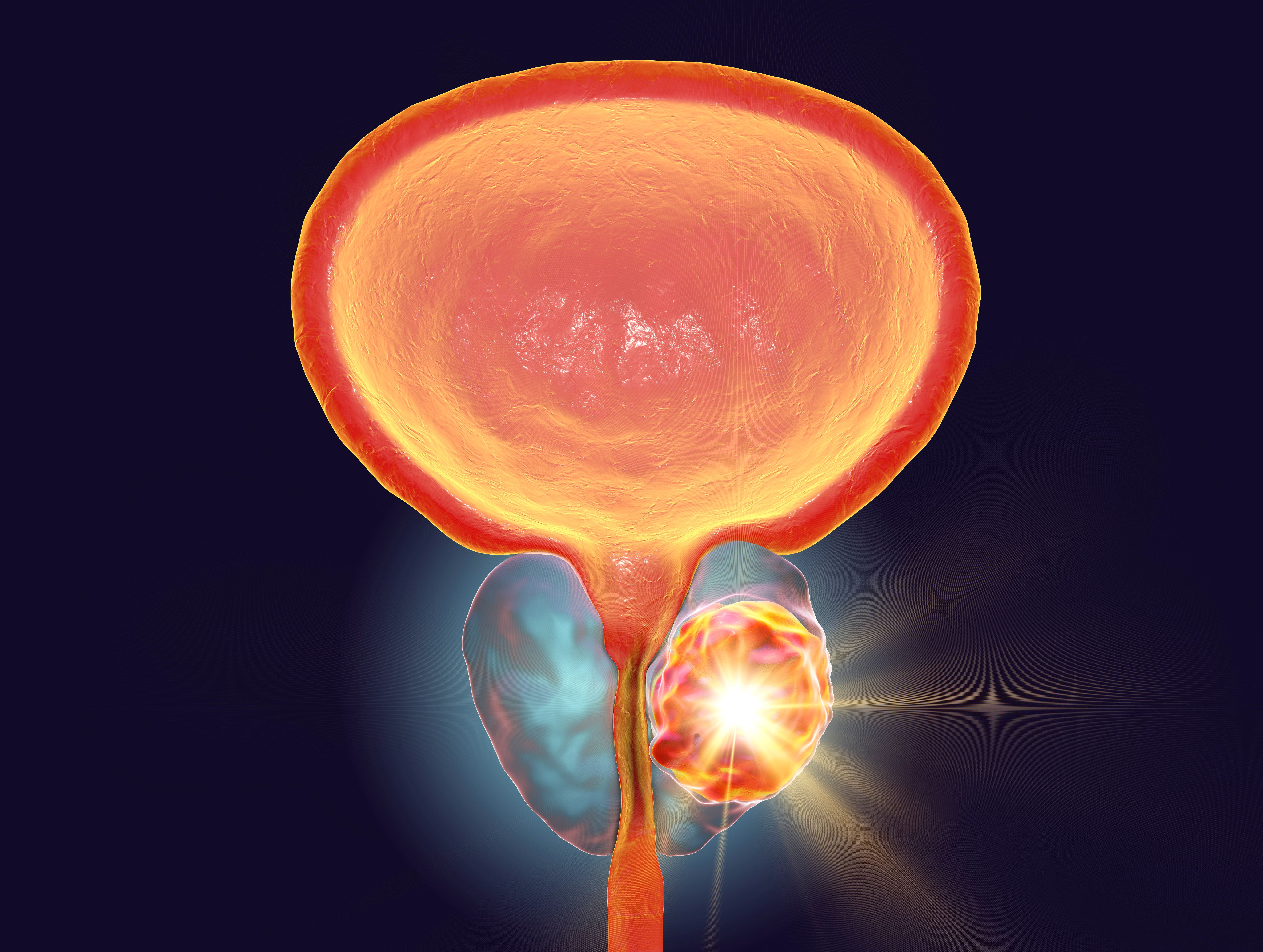Enzalutamide/Leuprolide Regimen Reduces Risk of Death in Prostate Cancer
At 8 years follow-up, patients with recurrent prostate cancer in the enzalutamide/leuprolide arm had an OS rate of 78.9% vs 69.5% vs leuprolide alone.
A consistent OS benefit was observed across all prespecified subgroups in patients treated with the enzalutamide combination compared with leuprolide monotherapy.

Enzalutamide (Xtandi) plus leuprolide acetate exhibited a 40.3% lower risk of death compared with leuprolide acetate alone in patients with high-risk, biochemically recurrent prostate cancer, according to findings from the final overall analysis of the phase 3 EMBARK trial (NCT02319837) presented at the 2025 European Society for Medical Oncology (ESMO) Congress and simultaneously published in The New England Journal of Medicine.1,2
At 8 years follow-up, patients in the enzalutamide plus leuprolide arm had an overall survival (OS) rate of 78.9% vs 69.5% for the leuprolide alone arm (HR, 0.597; 95% CI, 0.444–0.804; P = .0006). Furthermore, investigators reported improvements in secondary end points including time to first use of new antineoplastic therapy, time to symptomatic skeletal events, and progression-free survival (PFS) on first subsequent therapy (PFS2).
“To our knowledge, this is the greatest survival benefit based upon hazard ratio ever seen in a global phase 3 prostate cancer trial based upon all patients, not small subsets,” Stephen J. Freedland, MD, said during the presentation of the data. Freedland is the Warschaw, Robertson, Law Families Chair in Prostate Cancer, professor in the Department of Urology, director of the Center for Integrated Research in Cancer and Lifestyle, and associate director for Training and Education at the Samuel Oschin Comprehensive Cancer Institute in Los Angeles, California.
What Was the EMBARK Trial Design?
In the EMBARK trial, 1068 high-risk biochemically recurrent patients with prostate cancer who were conventionally imaging negative were randomly assigned in a 1:1:1 fashion to receive either 160 mg of enzalutamide and 22.5 mg of leuprolide acetate (n = 355), placebo plus leuprolide acetate (n = 358), or enzalutamide monotherapy (n = 355).3
The primary end point was metastasis-free survival, as assessed by blinded independent central review, in the combination group as compared with the leuprolide-alone group. A key secondary end point was metastasis-free survival in the monotherapy group as compared with the leuprolide-alone group. Other secondary end points were time to prostate-specific antigen progression, time to first use of new antineoplastic therapy, time to first symptomatic skeletal event, and PFS2.3 Freedland noted that in the initial study, investigators reported a metastasis-free survival rate of 87.3% (95% CI, 83.0–90.6) at a median follow-up of 60.7 months in the enzalutamide plus leuprolide arm.3
What Was Observed Regarding Patient Subsets?
When patient subsets were analyzed, a consistent OS benefit was observed across all prespecified subgroups in patients treated with the enzalutamide combination compared with leuprolide monotherapy.
“Although the numbers within these subsets are small and do not always reach statistical significance, nonetheless, we could not identify any subset of patients that did not benefit from adding enzalutamide to leuprolide,” Freedland said.
What Was Found Regarding Secondary End Points?
Regarding secondary end points, significant improvement was observed after an additional 2.3 years of follow-up for time to first use of antineoplastic therapy for the enzalutamide combination compared with leuprolide alone (HR, 0.374; 95% CI, 0.287–0.489; P <.0001). A benefit was also reported among patients treated with enzalutamide monotherapy vs leuprolide alone (HR, 0.570; 95% CI, 0.450-0.721; P <.0001).
“This finding suggests that the lack of castration leading to high testosterone leading to aromatization to estrogen may have added bone health benefits,” Freedland said.
For time to first symptomatic skeletal event, the combination also bested leuprolide alone with an HR of 0.398 (95% CI, 0.221–0.716; P = .0015). Enzalutamide monotherapy also demonstrated a benefit vs leuprolide alone with an HR of 0.493 (95% CI, 0.283–0.857; P = .0105).
Significant improvement was also observed in PFS2 in patients who received the enzalutamide combination vs leuprolide alone (HR, 0.563; 95% CI, 0.420–0.755; P <.0001). Benefit was also observed in patients who received enzalutamide alone vs leuprolide alone (HR, 0.761; 95% CI, 0.581–0.998; P = .0465).
What Was the Safety Profile?
Regarding safety, no new safety signals were observed relative to what was previously reported. A higher incidence of serious treatment emergent adverse events (TEAEs) related to the study drug was reported in the enzalutamide combination, but it was lower than 10% across the 3 arms (enzalutamide combination, 8.5%; leuprolide alone, 2.5%; and enzalutamide alone, 7.6%). Grade 3 or higher TEAEs were experienced by 19.3%, 9.5%, and 20.3% of patients, respectively.
“I think these findings, in conjunction with the original results published previously, show that enzalutamide with leuprolide is the standard of care for high-risk, biochemically recurrent patients with prostate cancer,” Freedland concluded.
Disclosures: The study was sponsored by Astellas Pharma Inc and Pfizer Inc and Freedland is a consultant to both companies, as well as many of the coinvestigators, some of whom are employees of the companies.
References
- Shore ND, de Almeia M, De Giorgi U, et al. Overall survival with enzalutamide in biochemically recurrent prostate cancer. Presented at: 2025 European Society for Medical Oncology Congress; October 17-21, 2025; Berlin, Germany. LBA87.
- Shore ND, de Almeida Cruz M, De Giorgi U, et al. Improved survival with enzalutamide in biochemically recurrent prostate cancer. N Engl J Med. 2025; Published October 19, 2025. doi:10.1056/NEJMoa2510310
- Freedland SJ, de Almeida Luz M, De Giorgi U, et al. Improved Outcomes with Enzalutamide in Biochemically Recurrent Prostate Cancer. N Engl J Med. 2023;389(16):1453-1465. doi:10.1056/NEJMoa2303974